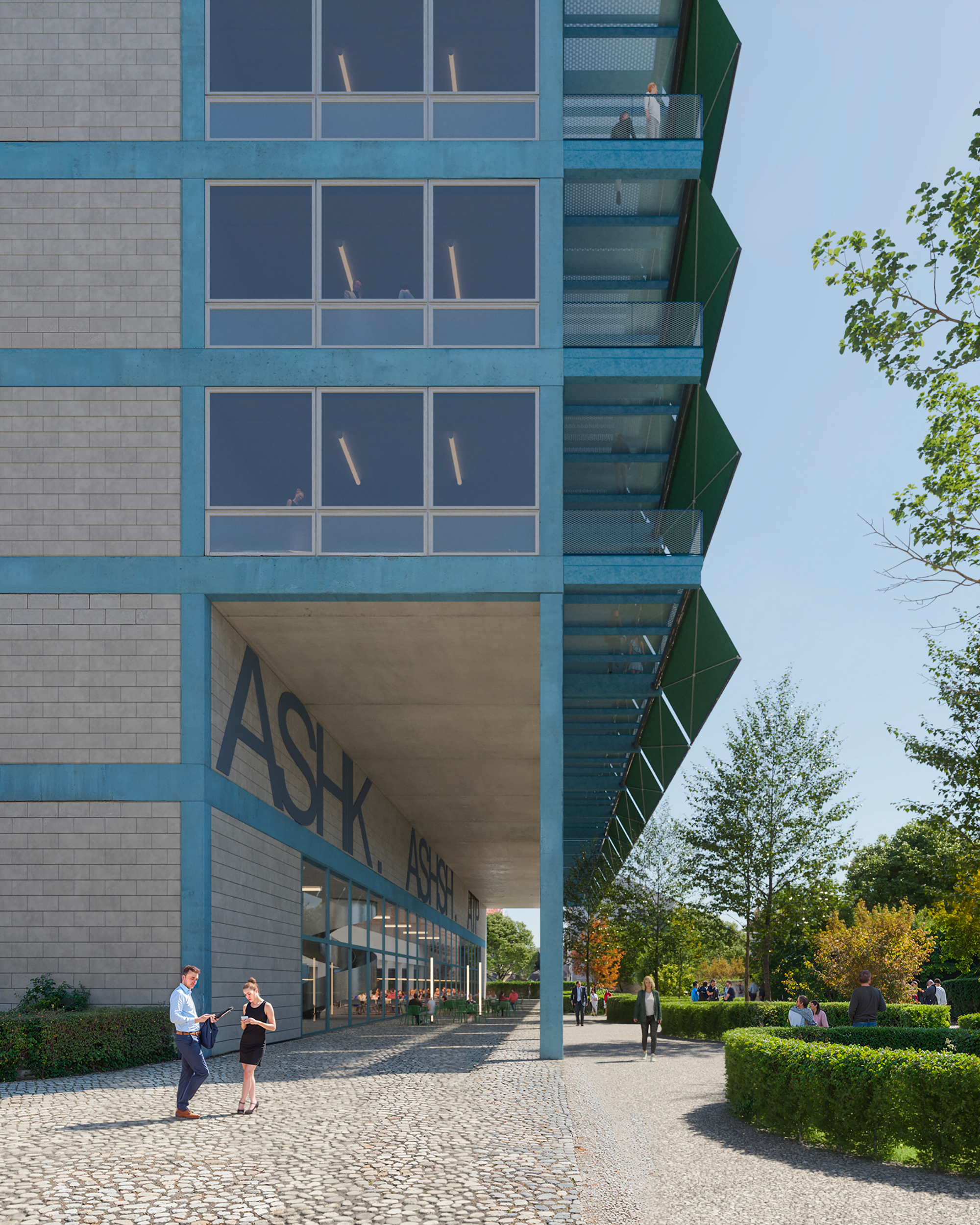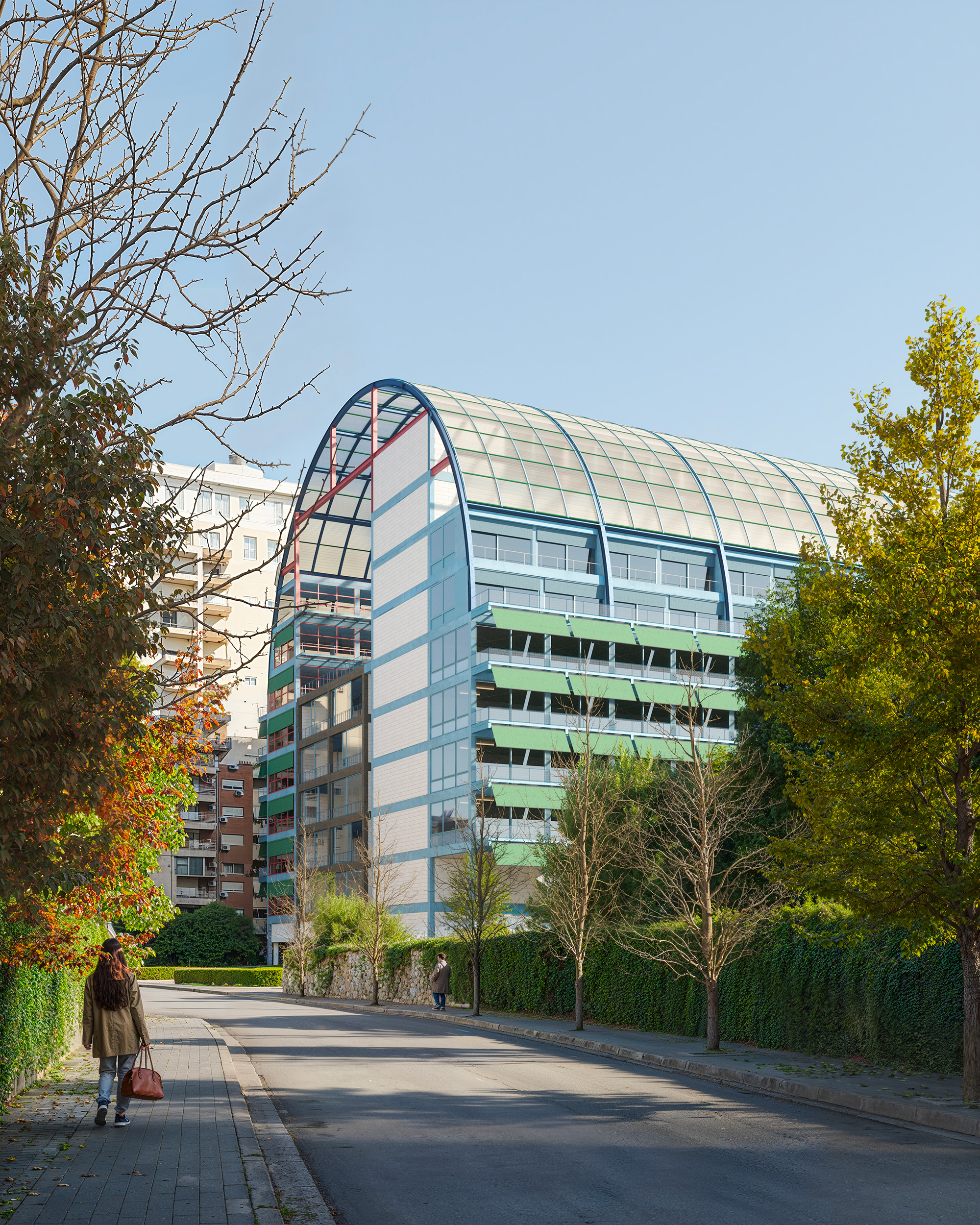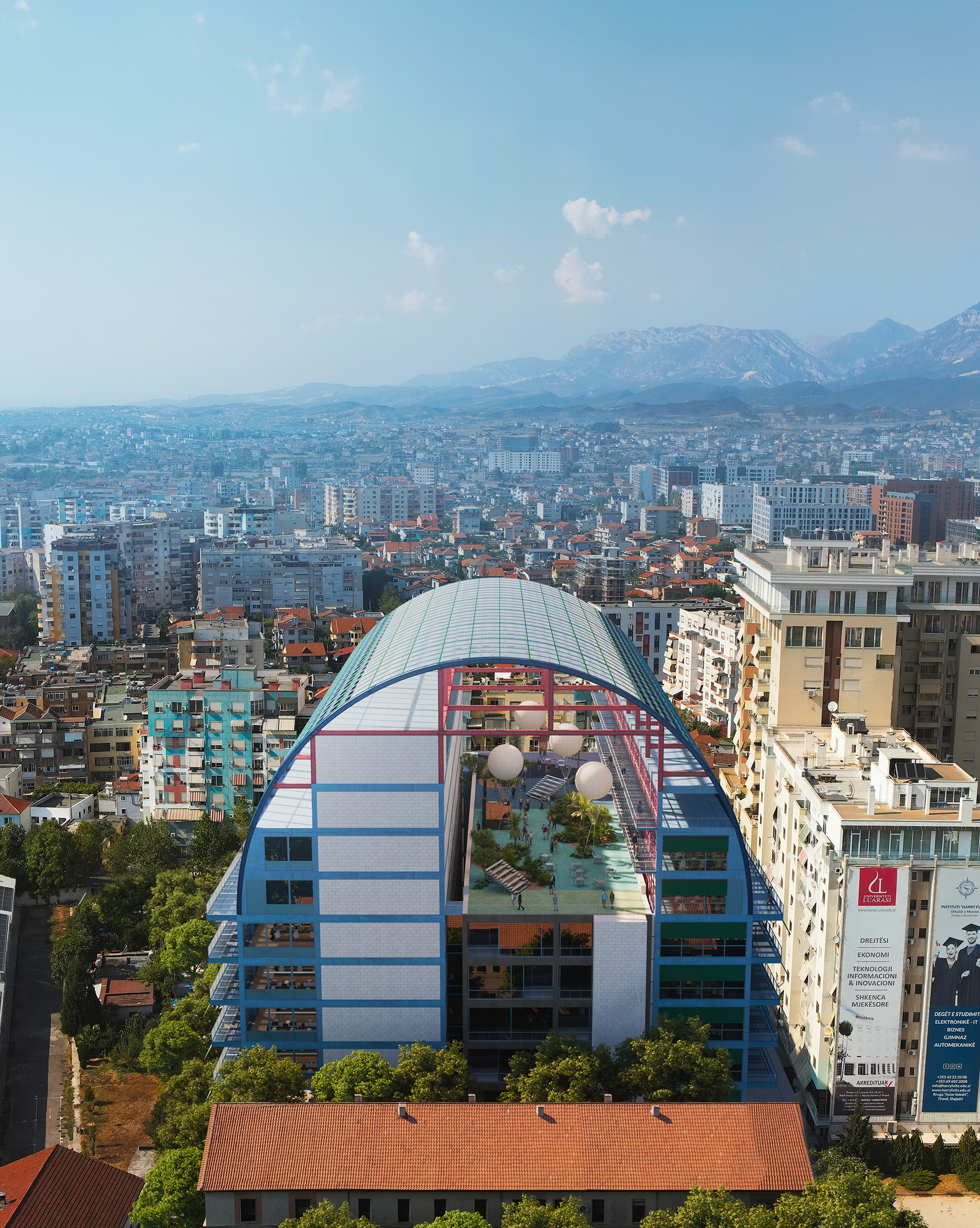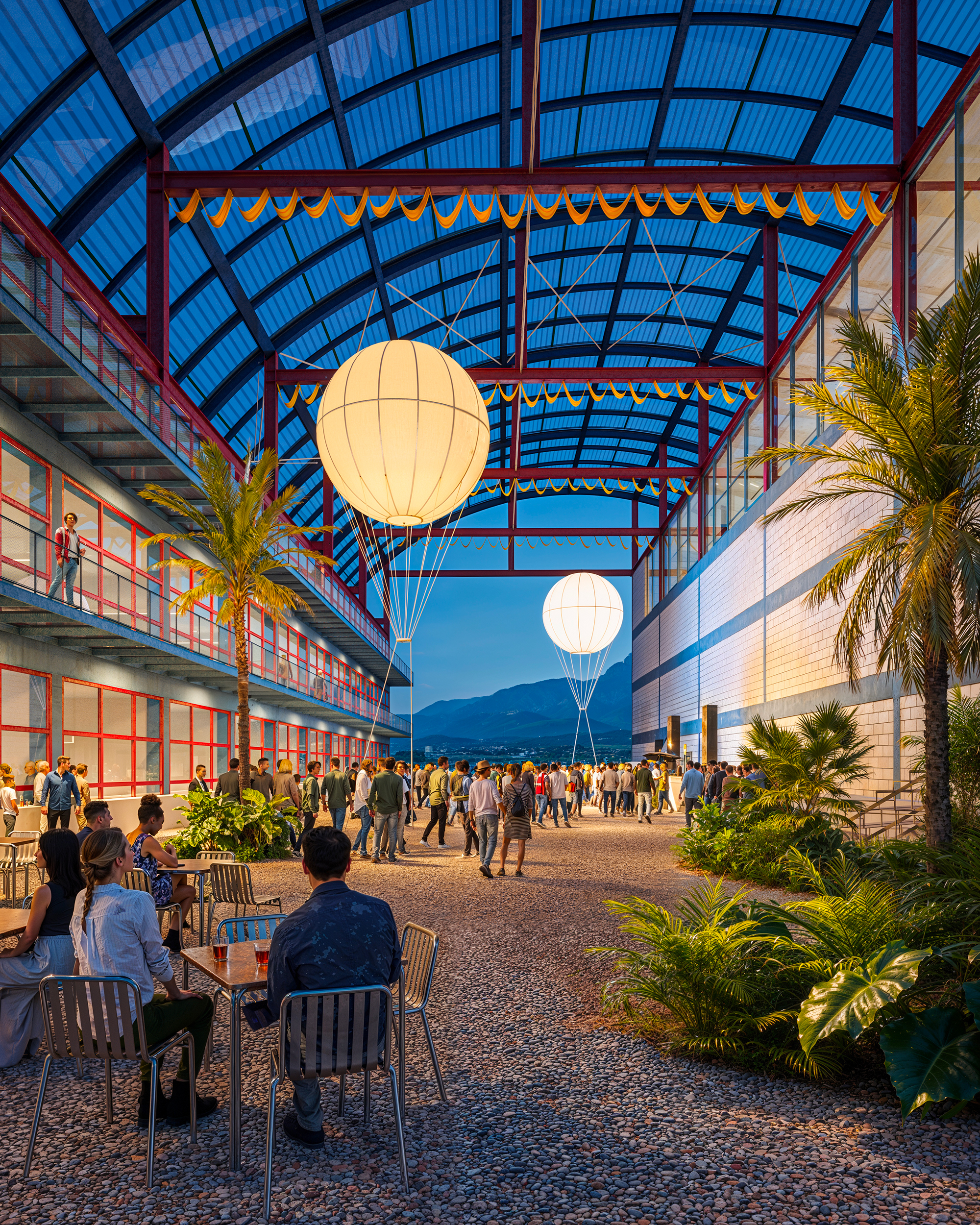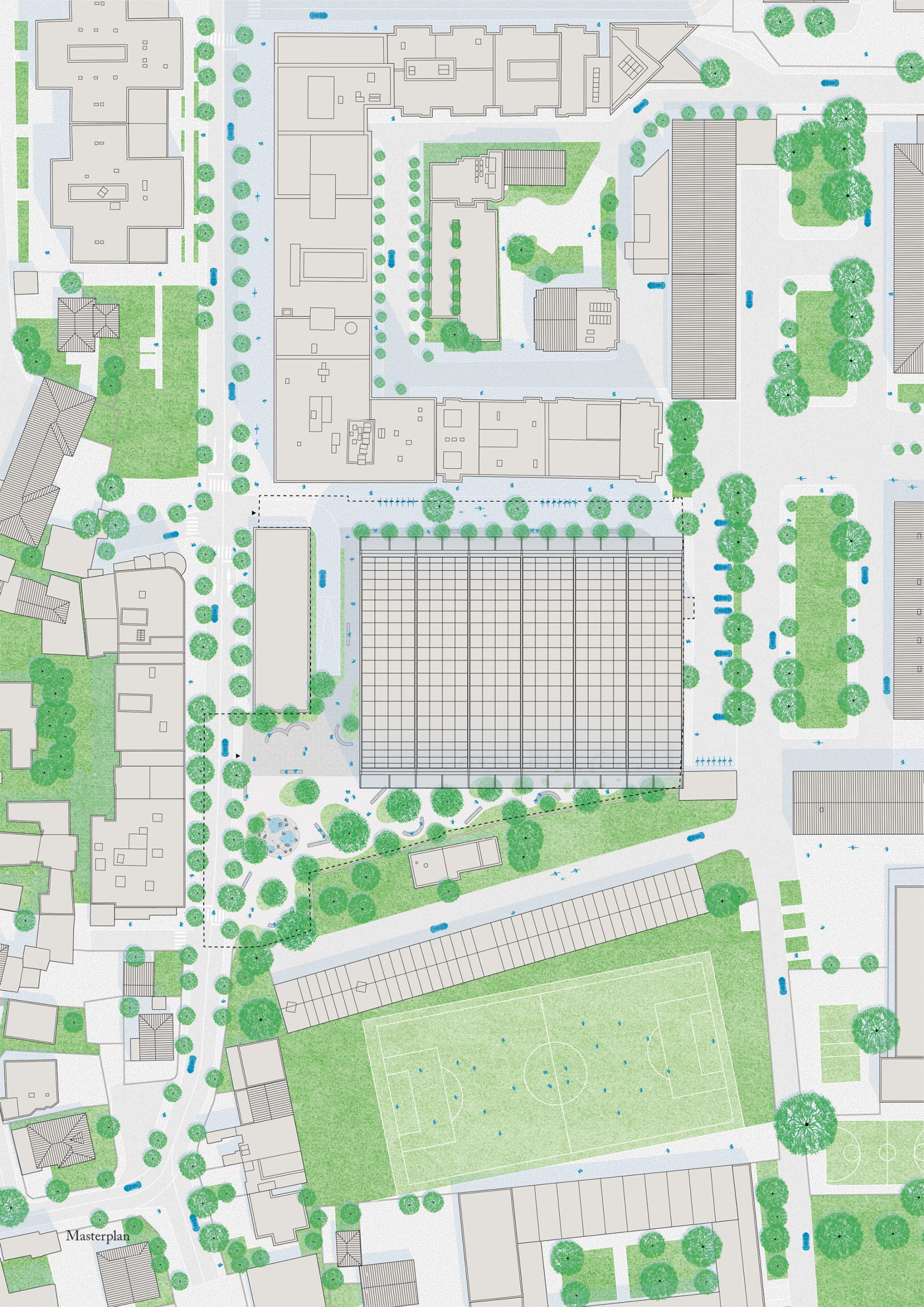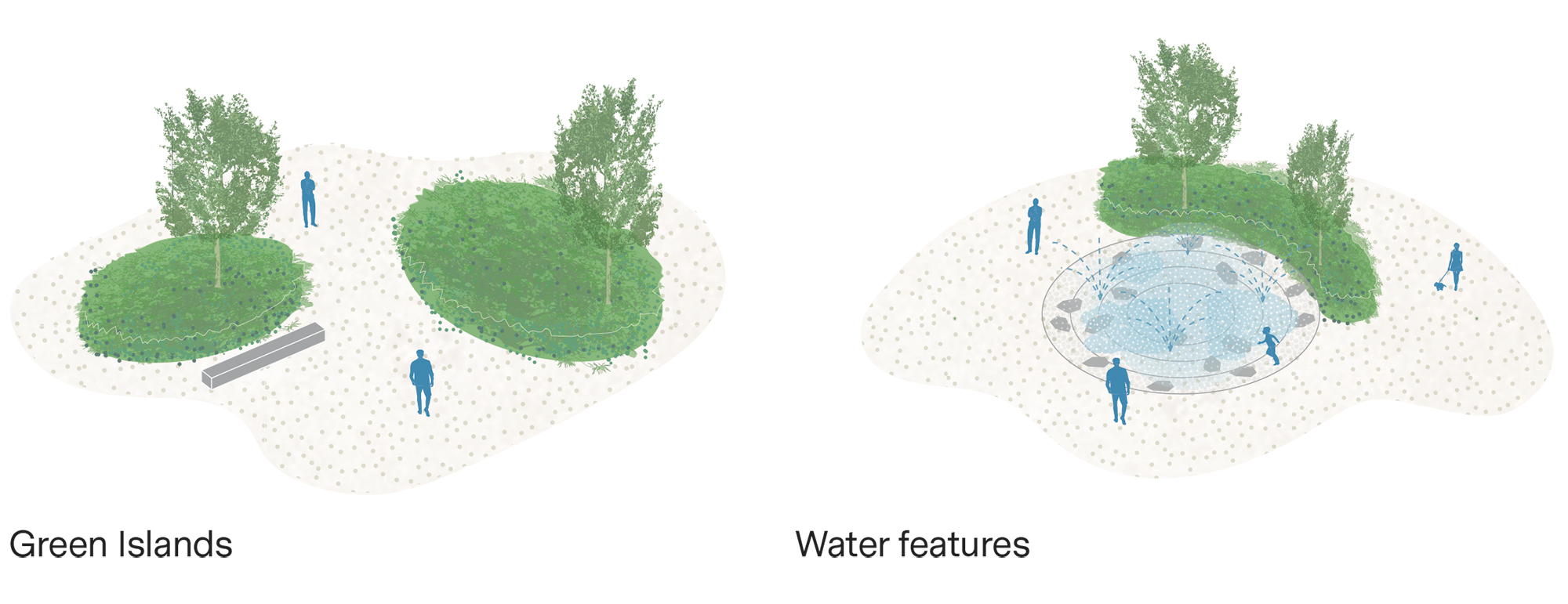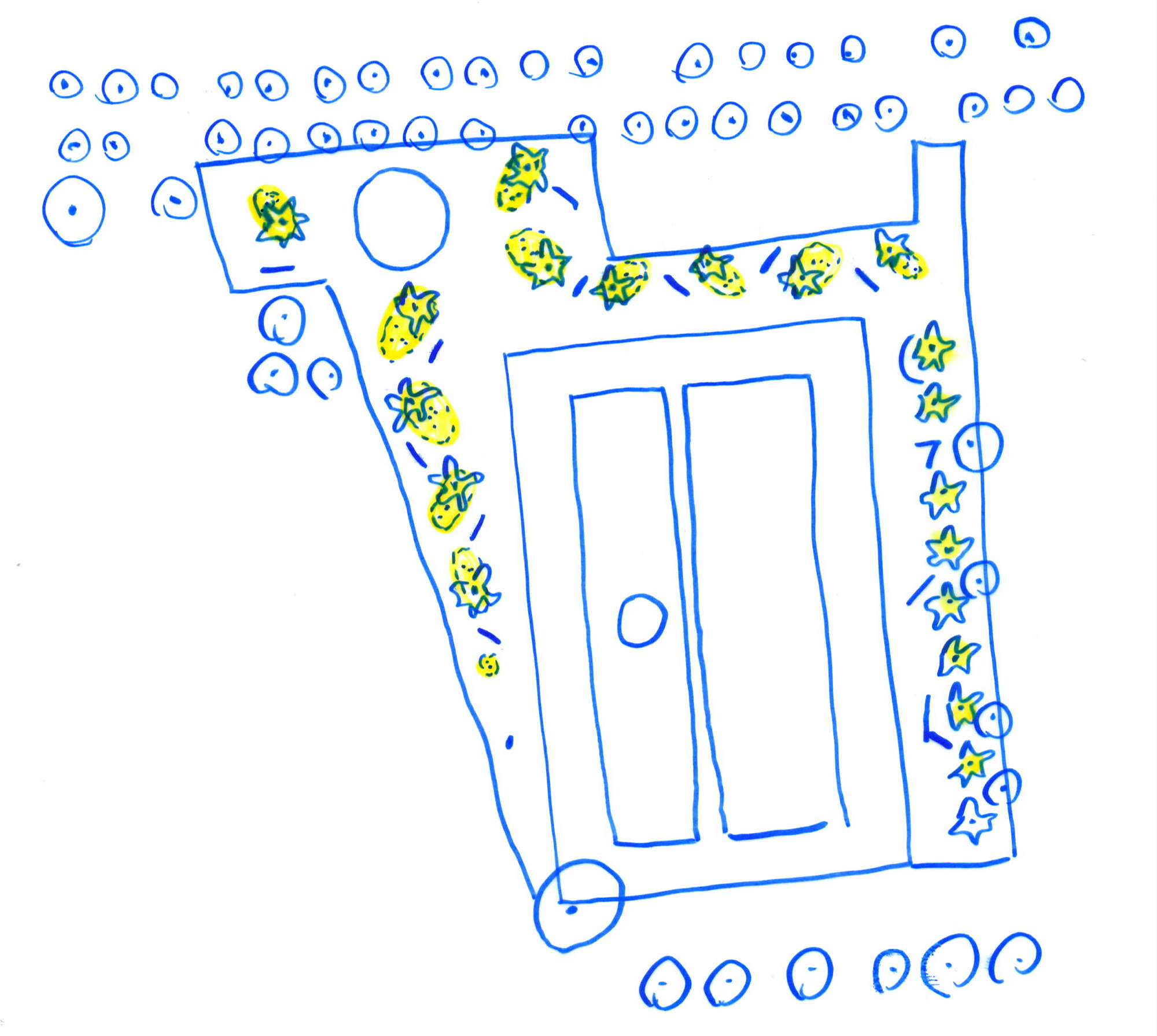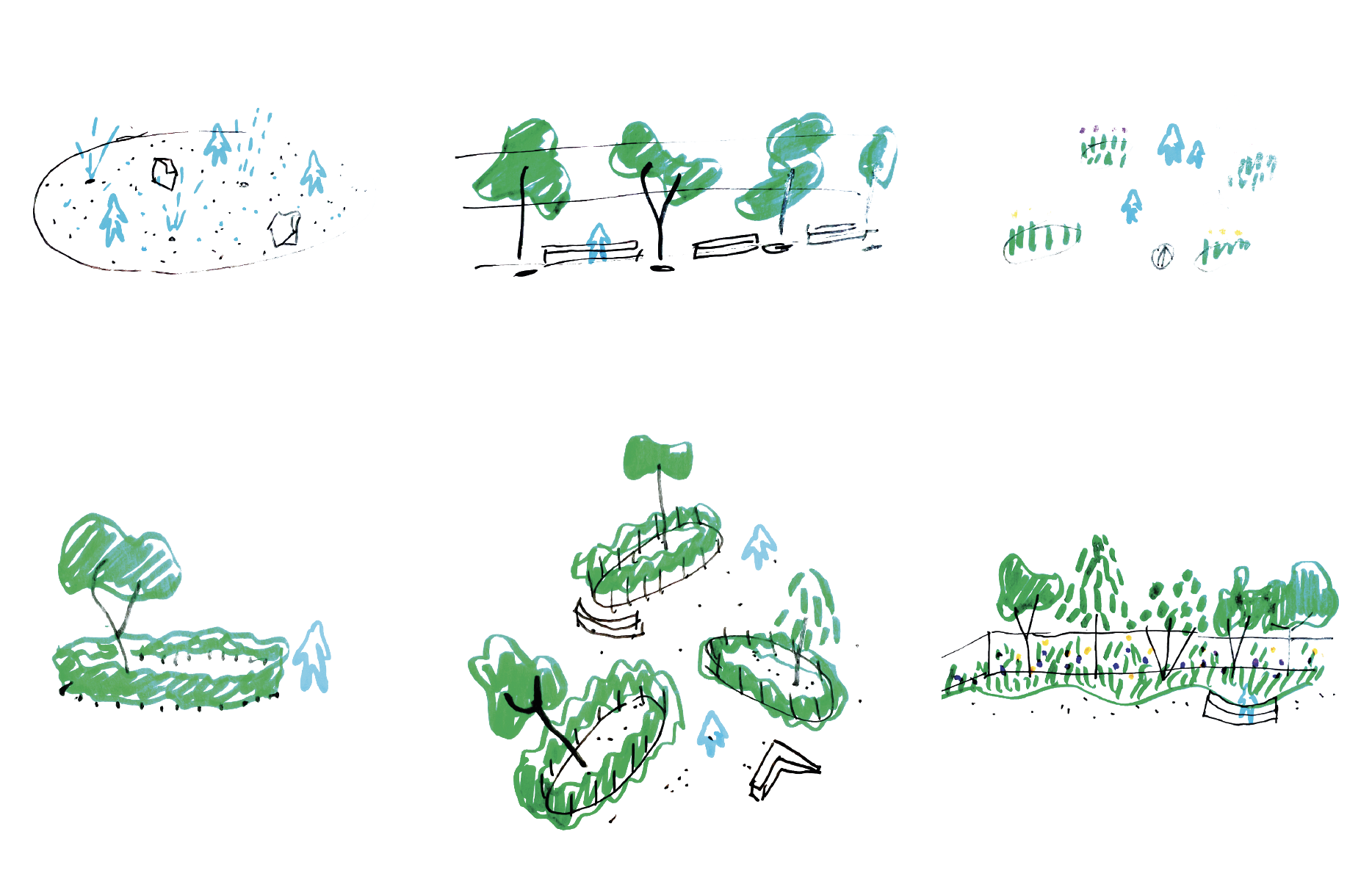status:
International Concept Design Competition Energizing Cities, winning project, ongoing
year:
2024
place:
Tirana, Albania
client:
Albania National Territorial Planning Agency, Municipality of Tirana
with:
Baukuh, Sam Chermayeff Office, Muoto, Atmos Lab, Arkimade, Simon Boudivin, Bollinger+Grohmann
description:
The outdoor areas of the Civic Land Center are designed as a water garden that acts as a threshold between the new building and the urban context. The garden echoes a quiet river. This atmosphere is evoked through the choice of paving materials and plant species and through the presence of a generous circular water feature. The site is a continuous and crossable surface divided into two main areas characterized by different paving materials. A smooth finish pebble paving surrounds the building and connects the two accesses on Rruga Panorama on the North and East. On the western side of the plot, where the main planted area is located, the surface is covered in gravel. Here, the garden is surrounded by a wall that becomes the background for new plantation. The triangular area is dotted with ovoidal islands made of green edges with different dimensions and orientations at the borders and individual trees or shrubs in the middle. Some of the smaller islands invade also the area of the portico, and in so doing animate the outdoor space of the kindergarten. A collection of concrete benches of different geometries are scattered across the garden following a confetti-like layout so that the public and the people using the building on a daily basis are invited to use this new place. This microclimatic garden operates as an open-air room, where people can gather surrounded by plants for a moment of relaxation. On the eastern side of the lot, a line of trees defines a green axis on Rruga Panorama, strengthening the urban identity of the street and creating a green framework for the activities already present along the street. This collection of diverse and complementary outdoor spaces defines a series of pocket urban oases, able to face rising temperatures, improve the community’s health and well-being, and increase the city’s biodiversity.
realistic visualization:
Fusao
